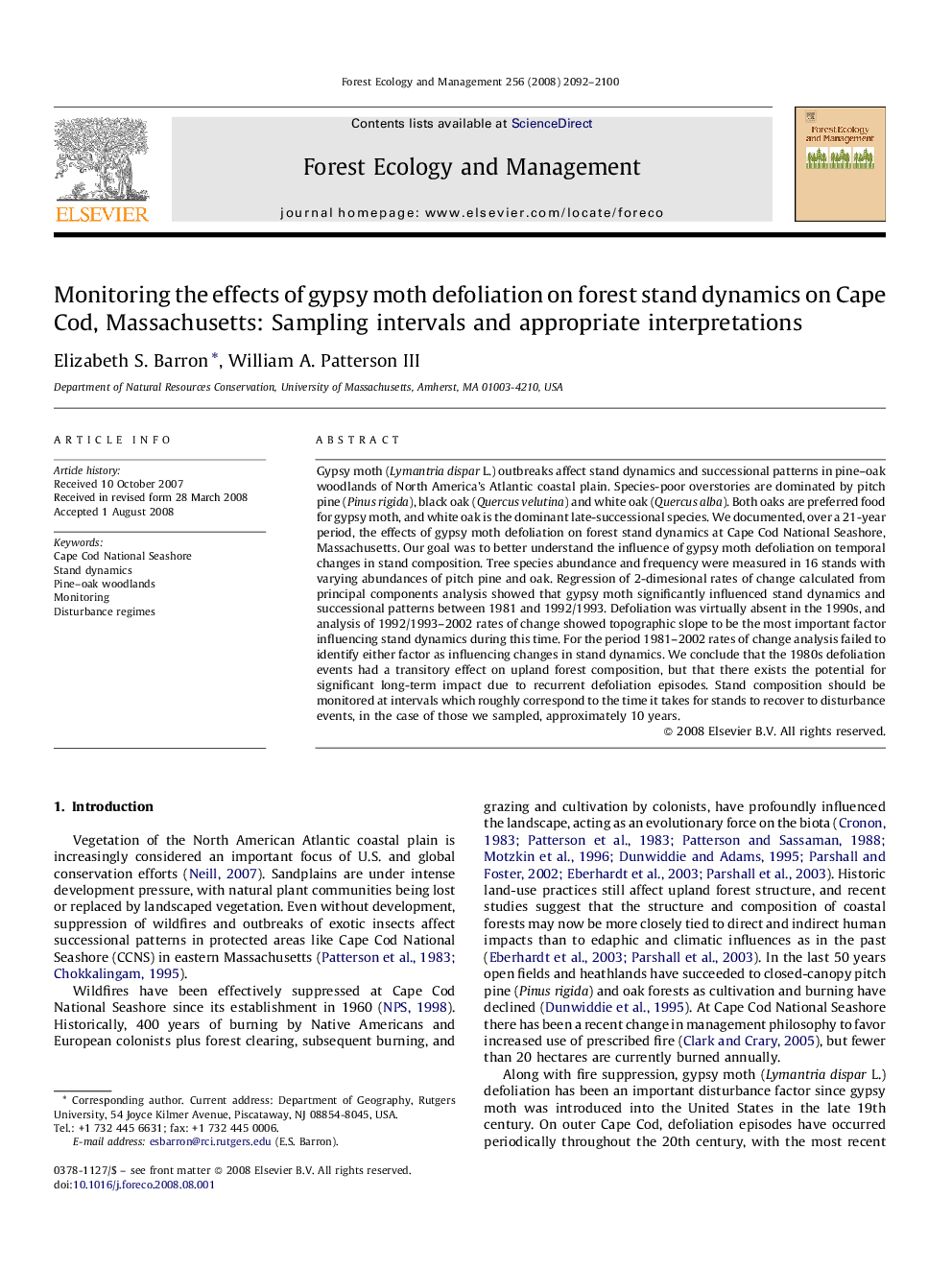| کد مقاله | کد نشریه | سال انتشار | مقاله انگلیسی | نسخه تمام متن |
|---|---|---|---|---|
| 89247 | 159336 | 2008 | 9 صفحه PDF | دانلود رایگان |

Gypsy moth (Lymantria dispar L.) outbreaks affect stand dynamics and successional patterns in pine–oak woodlands of North America's Atlantic coastal plain. Species-poor overstories are dominated by pitch pine (Pinus rigida), black oak (Quercus velutina) and white oak (Quercus alba). Both oaks are preferred food for gypsy moth, and white oak is the dominant late-successional species. We documented, over a 21-year period, the effects of gypsy moth defoliation on forest stand dynamics at Cape Cod National Seashore, Massachusetts. Our goal was to better understand the influence of gypsy moth defoliation on temporal changes in stand composition. Tree species abundance and frequency were measured in 16 stands with varying abundances of pitch pine and oak. Regression of 2-dimesional rates of change calculated from principal components analysis showed that gypsy moth significantly influenced stand dynamics and successional patterns between 1981 and 1992/1993. Defoliation was virtually absent in the 1990s, and analysis of 1992/1993–2002 rates of change showed topographic slope to be the most important factor influencing stand dynamics during this time. For the period 1981–2002 rates of change analysis failed to identify either factor as influencing changes in stand dynamics. We conclude that the 1980s defoliation events had a transitory effect on upland forest composition, but that there exists the potential for significant long-term impact due to recurrent defoliation episodes. Stand composition should be monitored at intervals which roughly correspond to the time it takes for stands to recover to disturbance events, in the case of those we sampled, approximately 10 years.
Journal: Forest Ecology and Management - Volume 256, Issue 12, 10 December 2008, Pages 2092–2100